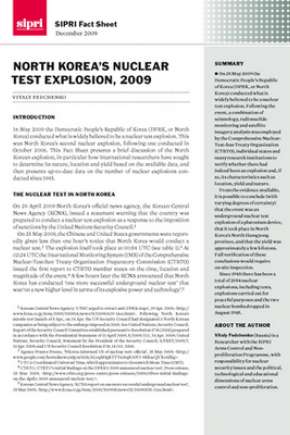The independent resource on global security
North Korea’s Nuclear Test Explosion, 2009
On 25 May 2009 the Democratic People’s Republic of Korea (DPRK, or North Korea) conducted what is widely believed to be a nuclear test explosion. Following the event, a combination of seismology, radionuclide monitoring and satellite imagery analysis was employed by the Comprehensive Nuclear-Test-Ban Treaty Organization (CTBTO), individual states and many research institutions to verify whether there had indeed been an explosion and, if so, its characteristics such as location, yield and nature.
From the evidence available, it is possible to conclude (with varying degrees of certainty) that the event was an underground nuclear test explosion of a plutonium device, that it took place in North Korea’s North Hamgyong province, and that the yield was approximately a few kilotons. Full verification of these conclusions would require on-site inspection.
Since 1945 there have been a total of 2054 nuclear explosions, including tests, explosions carried out for peaceful purposes and the two nuclear bombs dropped in August 1945.

